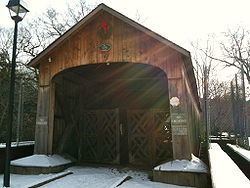Length 11,104 m | ||
 | ||
Hazards hunters, deer ticks, poison ivy | ||
Salmon river trail to frustration falls hiking oregon trails episode 9 detailed trail review
The Salmon River Trail is a 6.9-mile (11.1 km) Blue-Blazed hiking trail in Colchester, and East Hampton, Connecticut and is almost entirely in the Salmon River State Forest and Day Pond State Park. Almost all of the trail is in Colchester, the parking lot and part of the Comstock Covered Bridge over the Salmon River are in East Hampton.
Contents
- Salmon river trail to frustration falls hiking oregon trails episode 9 detailed trail review
- Trail description
- Trail communities
- History and folklore
- Hiking the trail
- References
Trail description
The Salmon River Trail is primarily used for hiking, backpacking, picnicking, and in the winter, snowshoeing.
Portions of the trail are suitable for, and are used for, cross-country skiing and geocaching. Site-specific activities enjoyed along the route include bird watching, hunting (very limited), fishing, horseback riding, bouldering and rock climbing (limited).
Trail communities
The official Blue-Blazed Salmon River Trail passes through land located within the following municipalities, from south to north: Colchester and East Hampton, Connecticut.
History and folklore
The Blue-Blazed Salmon River Trail was created by the Connecticut Forest and Park Association.
Hiking the trail
The mainline trail is blazed with blue rectangles. Trail descriptions are available from a number of commercial and non-commercial sources, and a complete guidebook is published by the Connecticut Forest and Park Association
Weather along the route is typical of Connecticut. Conditions on exposed ridge tops and summits may be harsher during cold or stormy weather. Lightning is a hazard on exposed summits and ledges during thunderstorms. Snow is common in the winter and may necessitate the use of snowshoes. Ice can form on exposed ledges and summits, making hiking dangerous without special equipment.
Biting insects can be bothersome during warm weather. Parasitic deer ticks (which are known to carry Lyme disease) are a potential hazard. Wearing bright orange clothing during the hunting season (Fall through December) is recommended.
